Rhubarb is an easy to grow, cold-hardy, and drought-tolerant perennial vegetable that produces for up to 20 years. It is one of the first spring foods that can be eaten from the garden and freezes well so you always have a supply on hand year-round.
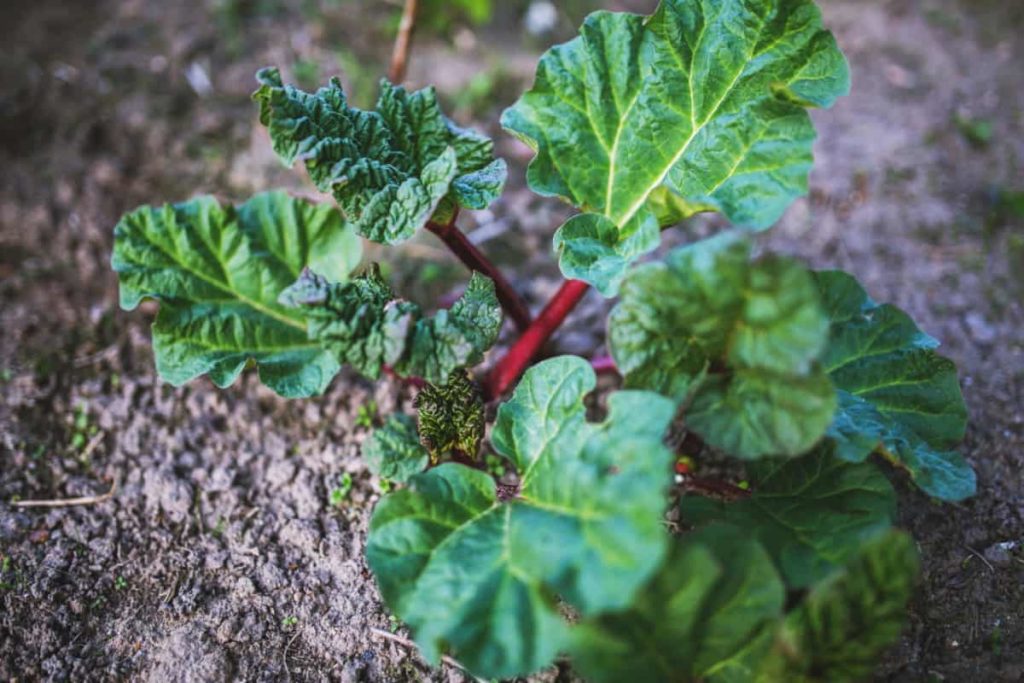
Where Should I Plant Rhubarb?
You have a few options for location when planning to plant rhubarb. Because rhubarb is a perennial, (meaning it comes back year after year) you want to be thoughtful of plant placement.
You can pick a spot in your vegetable garden or plant them in individual spots where they can live, undisturbed for many years to come. If planting rhubarb in a vegetable garden it is a good idea to plant them along the edge or in the corners so that it is easy to work around with a tiller and won't be disturbed.
Rhubarb plants prefer cooler weather so keep that in mind when choosing its permanent location. Rhubarb requires temperatures below 5 °C to break dormancy and to stimulate spring growth and summer temperatures averaging less than 24 °C for vigorous vegetative growth.
Once mature, plants produce quite well so only a few plants are needed to assure a good supply every season.
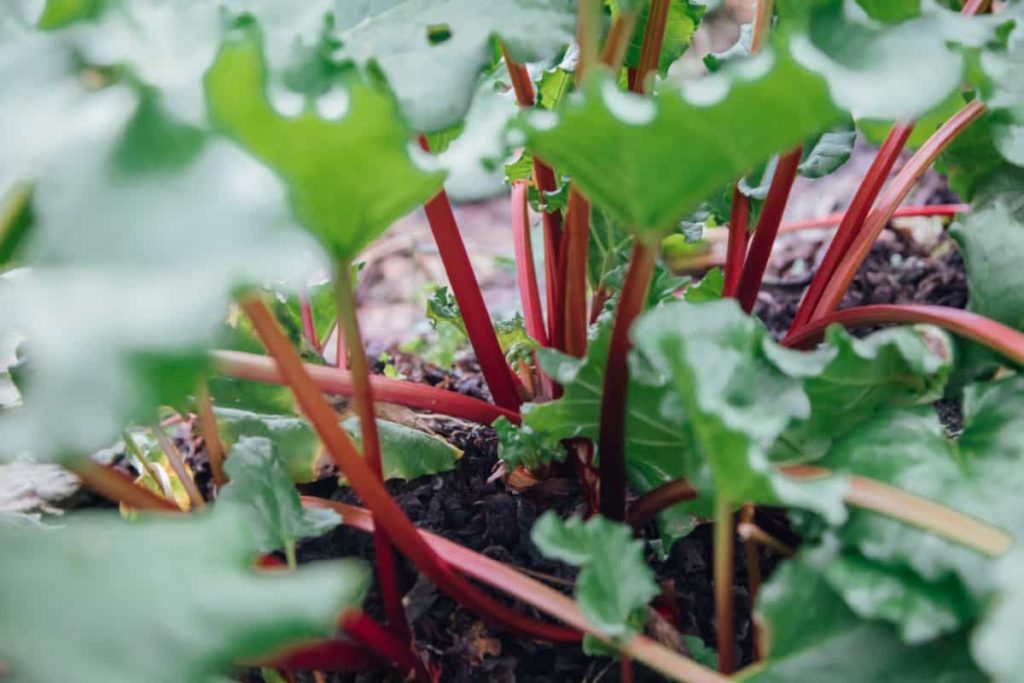
How Do I Plant Rhubarb?
Take the time to prepare the planting spots. Dig the soil well adding amendments like compost, manure or peat moss, and weed the area thoroughly.
Rhubarb is most successful when you can plant as early in the season as possible. Crowns can be found at the greenhouse or garden centers.
Rhubarb comes in crowns and should be planted a minimum of 2 feet apart. If you plan on growing rows of rhubarb space the rows at least 3 feet apart so you have some working space between the rows.
Plant the crowns at a depth no deeper than two inches. Each individual plant needs approximately a square yard of space.
Water well after planting to assure the roots have enough moisture to establish themselves. Mulching around the plants helps keep the ground consistently moist and aides in weed control.
After the second year once your rhubarb plants are strong and established you may dig and split the plants. Healthy plants can be split every 3 - 4 years. Divide when plants are dormant in early spring.
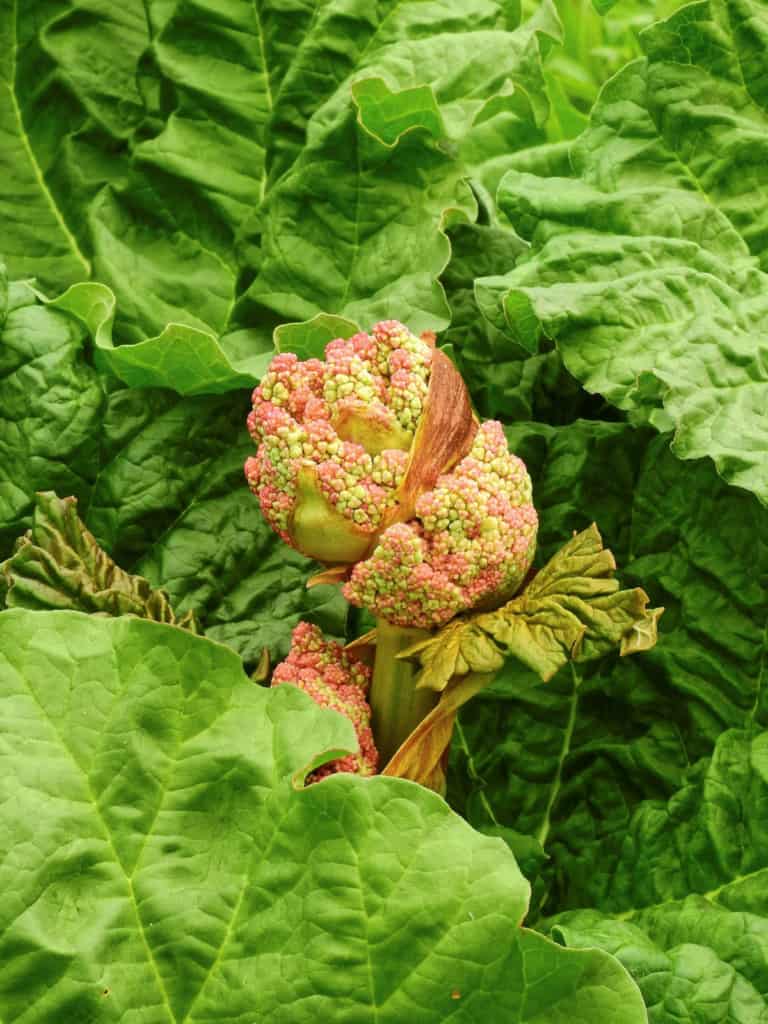
Harvesting Rhubarb
You will notice that during the spring the rhubarb will start to send up at least one fairly large flower. Remove any flowers as they appear. This directs all the energy back into the stems and root system.
During the first year, resist the temptation to harvest the stems, in order to allow Rhubarb plants to become properly established.
In the second year, you can start harvesting stems as early as May. In some areas the harvest can be prolonged thru to July and August. Begin harvesting when the leaves have fully unfurled and the stems are a foot long. To harvest grab rhubarb stalk close the base of the stem and twist them away from the crown.
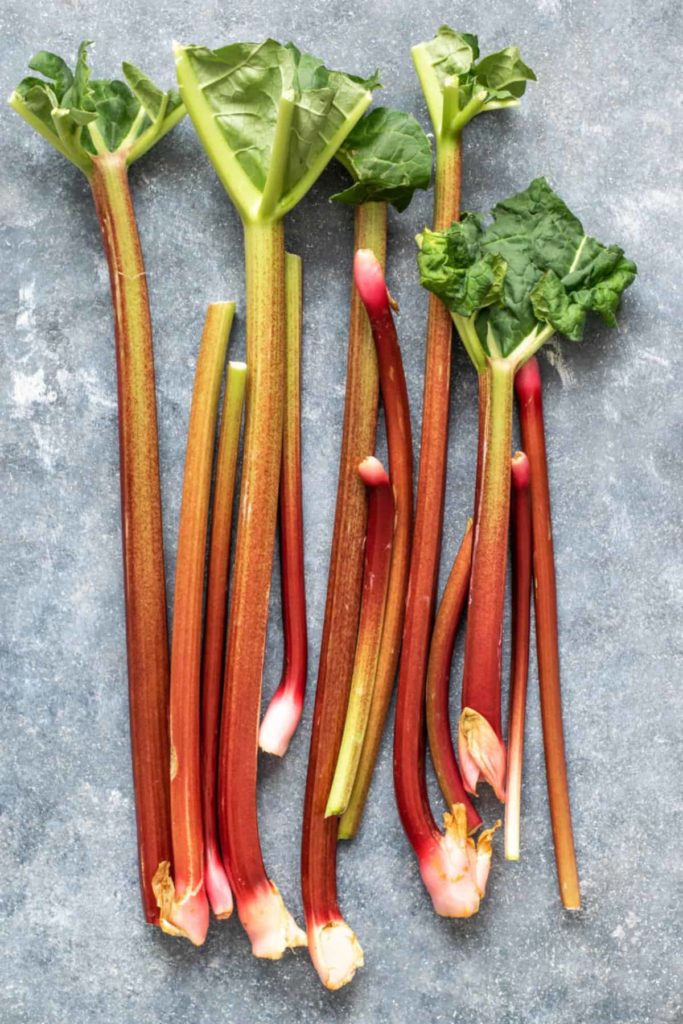
Harvest the fullest stems first to ensure you are taking the best from the plant as it grows and ripens.
Rhubarb Leaves are Toxic
One important thing to note about rhubarb, the leaves of the plant are toxic and should never be eaten. Trim the leaves from the stems and add them to your compost.
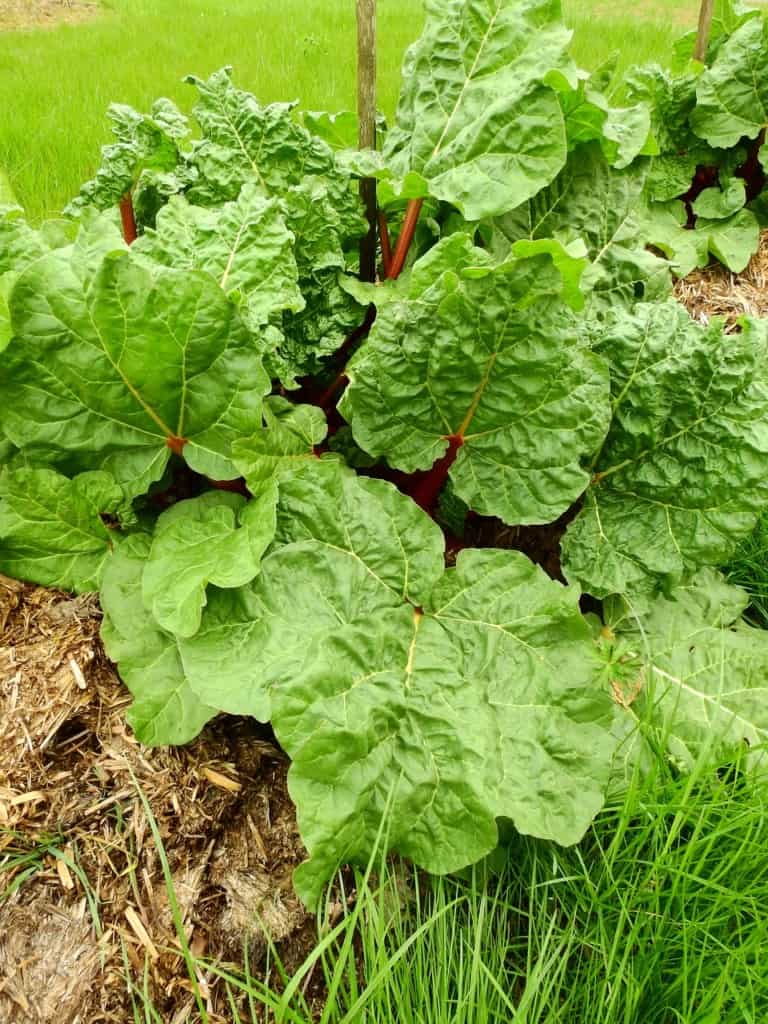
Long Term Storage of Rhubarb
The wonderful thing about rhubarb is once plants are established you will have a bounty of fresh rhubarb the entire season. Take advantage and prepare a few harvests for the freezer.
Clean and chop stems into 1 inch pieces. Package in vacuum-sealed bags and freeze. There is nothing better than being able to make rhubarb crisp at the height of winter. It freezes very well so be sure to stock up the freezer throughout the season.
Strawberry Rhubarb Crumble
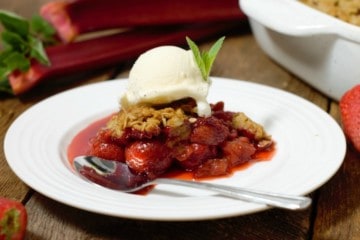
Winter Care of Rhubarb
When it comes to the care of rhubarb plants they are very hearty and do not require much work. Like most perennials it is good to leave some of the foliage on the plant as the season changes. Allow the top to die off, this is putting energy into the root. The roots store this energy to survive winter and begin growing in spring.
Once the ground is dry in spring, clean up the dead foliage from the previous season. You may notice dark green, very crinkly growth and often red nubs at the base of the leaves during spring clean up. Rhubarb will start to grow as soon as there is a bit of daytime warmth.
Take advantage in early spring to weed well around the rhubarb plants. They do well without being fertilized but regular water during dry spells is important.
Did you find this guide useful?? Comment & Rate it below, then tag me on Facebook. For more DIY gardening tips & from scratch recipes follow me on Facebook & Pinterest

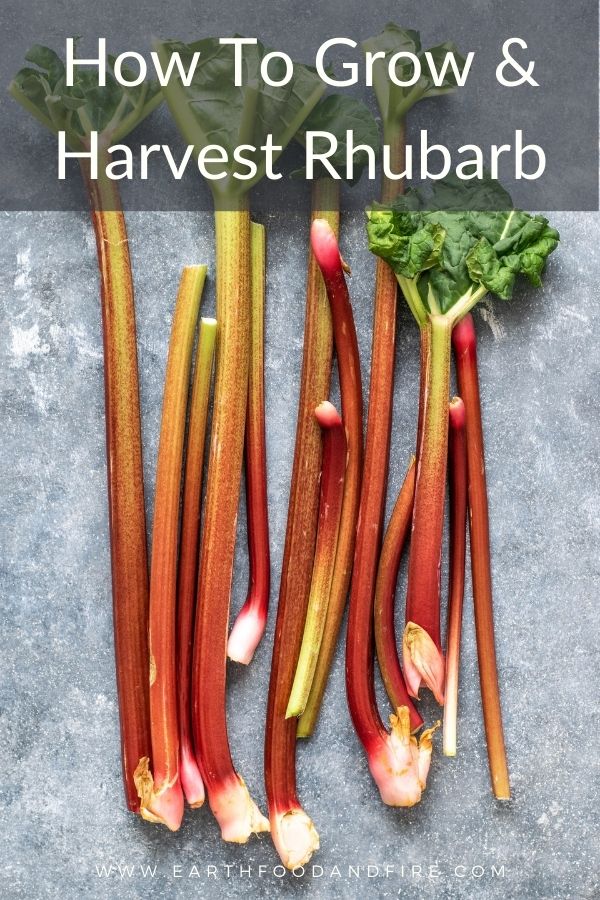
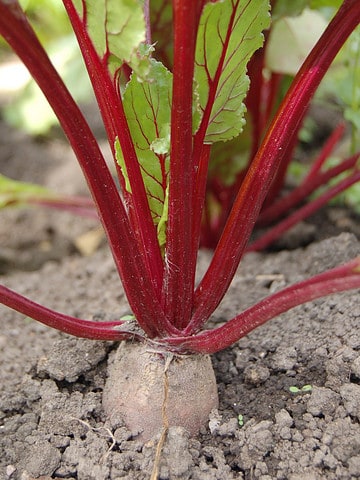
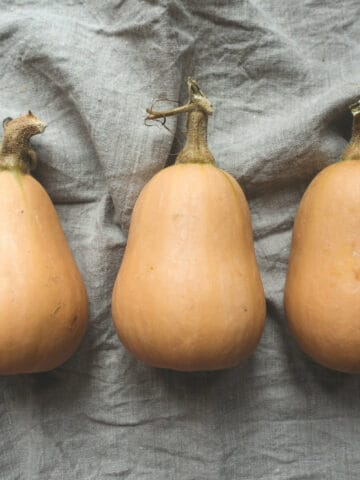
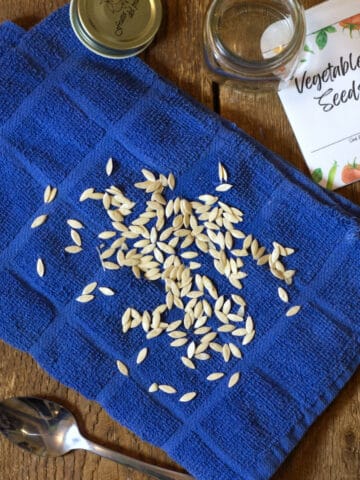
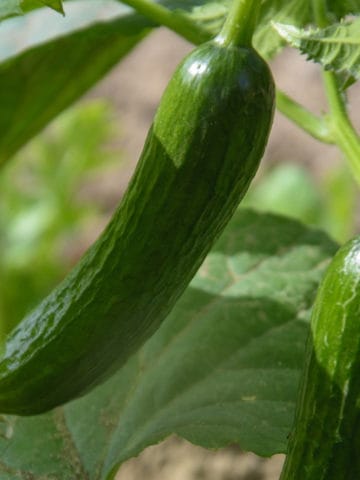
Comments
No Comments